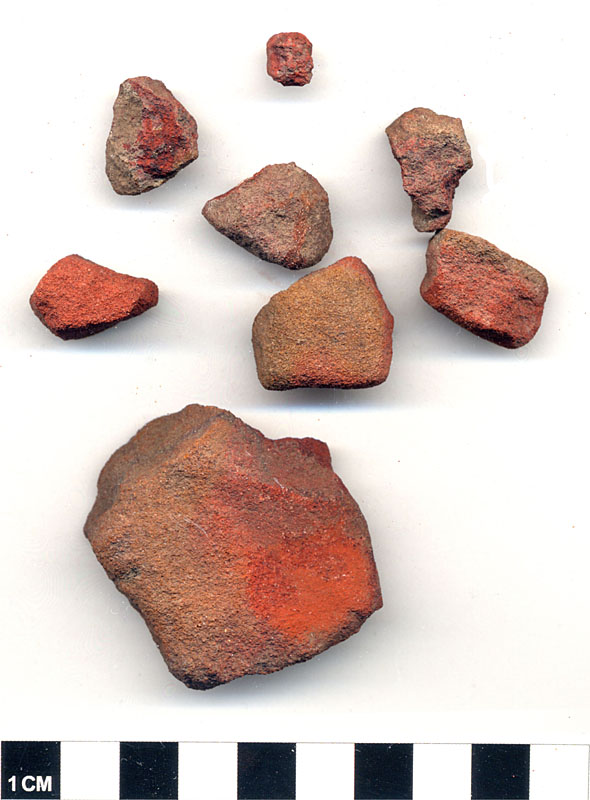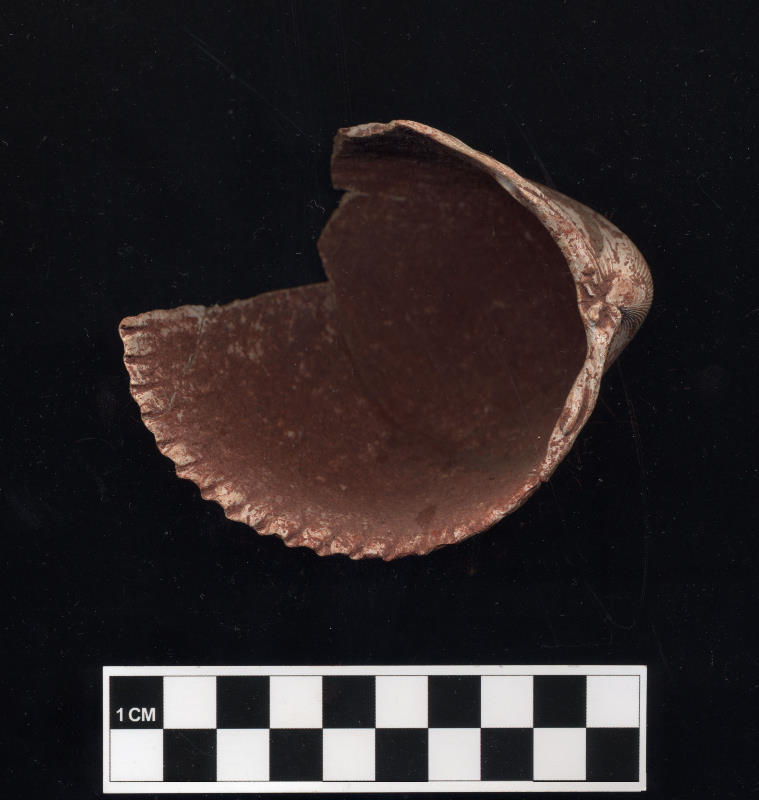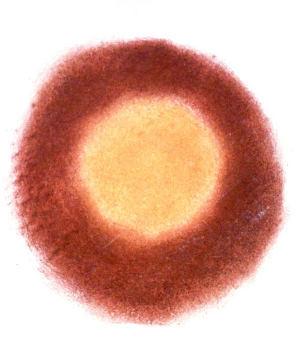Ochre
Ochre is a naturally occurring iron oxide pigment found in the interior coastal plains of Texas and farther inland. Ochre comes in a variety of colors, from brown to red to yellow, however red ochre is the most common type found among coastal assemblages. Red ochre, which is also derived from hematite, is composed mostly of iron oxide (Fe2O3) and forms in areas where soil is well-drained. Since red ochre does not occur locally, coastal natives would have either had to travel inland to find it, or more likely, obtained it through trade from inland groups. Ochre played an important role in the religious cosmology of coastal inhabitants and would have been a highly valued commodity.
Worldwide from Paleolithic peoples in Europe to Late Holocene peoples of the Americas, residues of red ochre are found in burial contexts. The coastal natives of Texas are no exception and used red ochre to imbue the departed with symbolic “blood.” At Mitchell Ridge traces of red ochre staining were observed on bone elements of 18 individuals and numerous shell artifacts. Since the human bones exhibited only trace amounts of red ochre, archaeologists believe paint was applied to the bodies as a burial ritual rather than deposited as a separate grave offering. One notable exception was a concentric pattern of powdered yellow ochre surrounded by red ochre power placed on the lower abdomen of a child interred at the Mitchell Ridge site during the early 18th century. This pattern is interpreted as a solar symbol.
A human burial at Caplen Mound, also on Galveston Island, was accompanied by a clam shell covered with a thin layer of red ochre. This clam shell probably served as the palette used during body preparation rituals, as traces of pigment suggests that the body was painted with red ochre.
Early historic accounts mention that the Karankawa of the central coast used ochre for face painting. They were said to use fibrous stalks or fingers to carefully paint powerful symbols on tribal members. While the exact function of body art varied among North American Indians, some designs aligned individuals with a specific clan, ethnicity, or social rank. Other painted symbols were donned before going into battle or performing a specific ritual. Regardless of specific meanings, coastal peoples made regular use of ochre.
![]()

|

|
